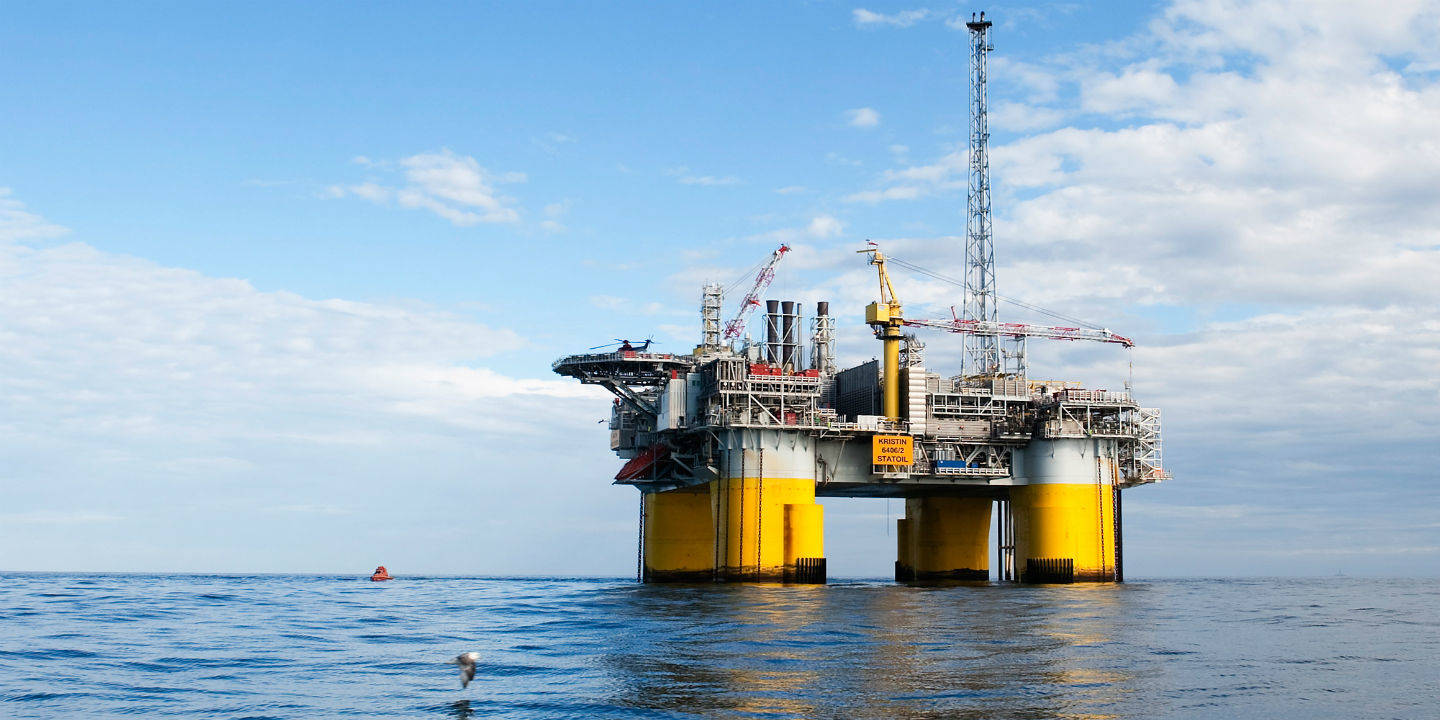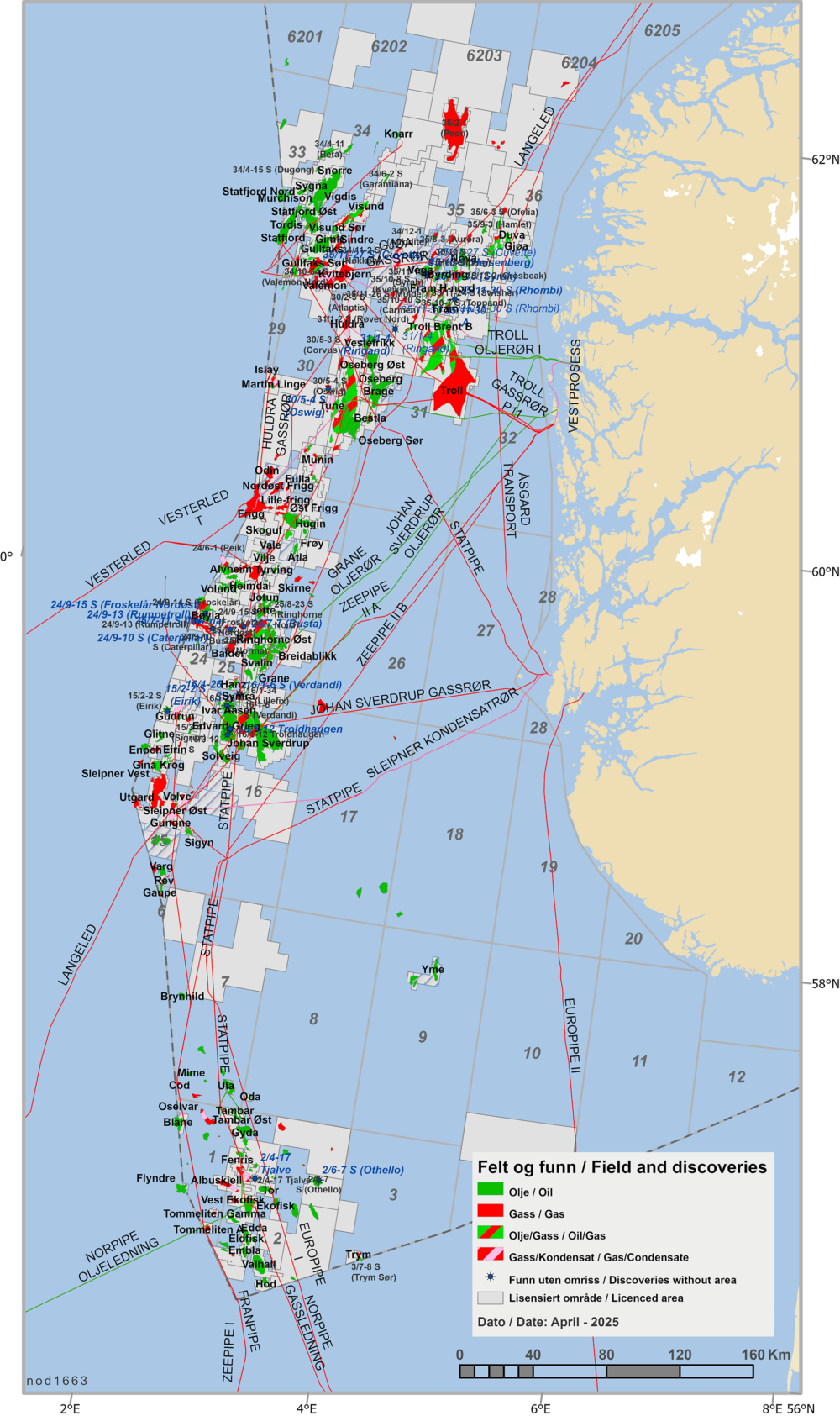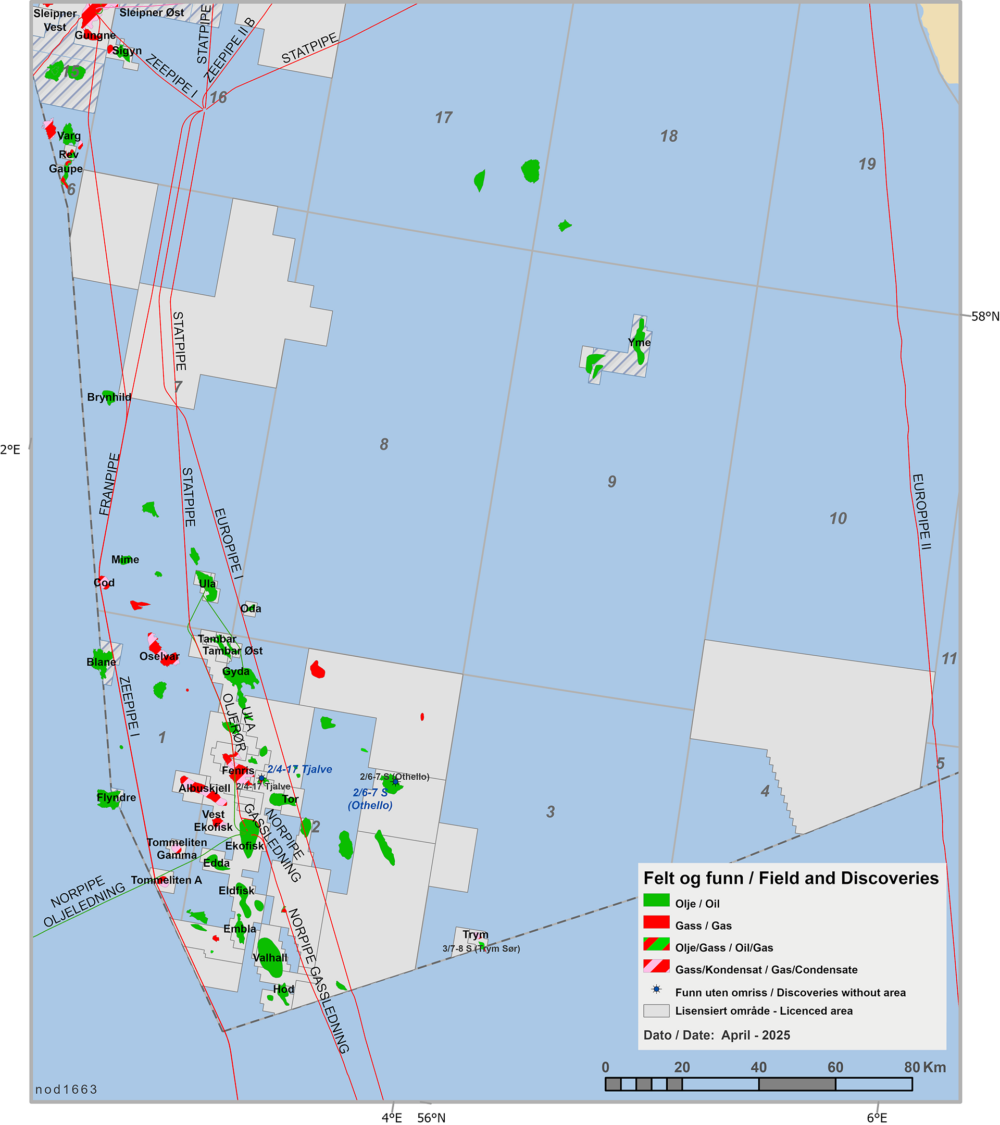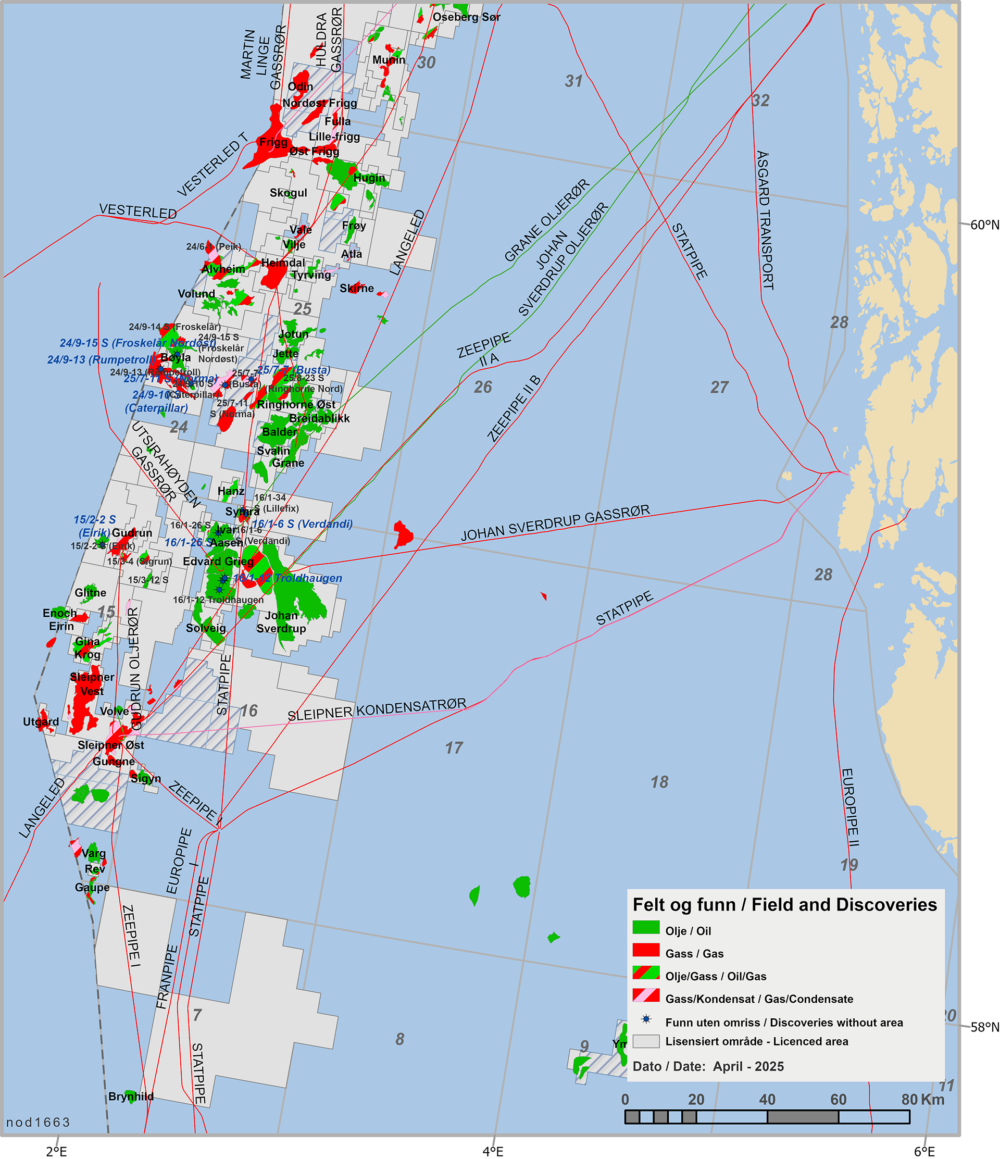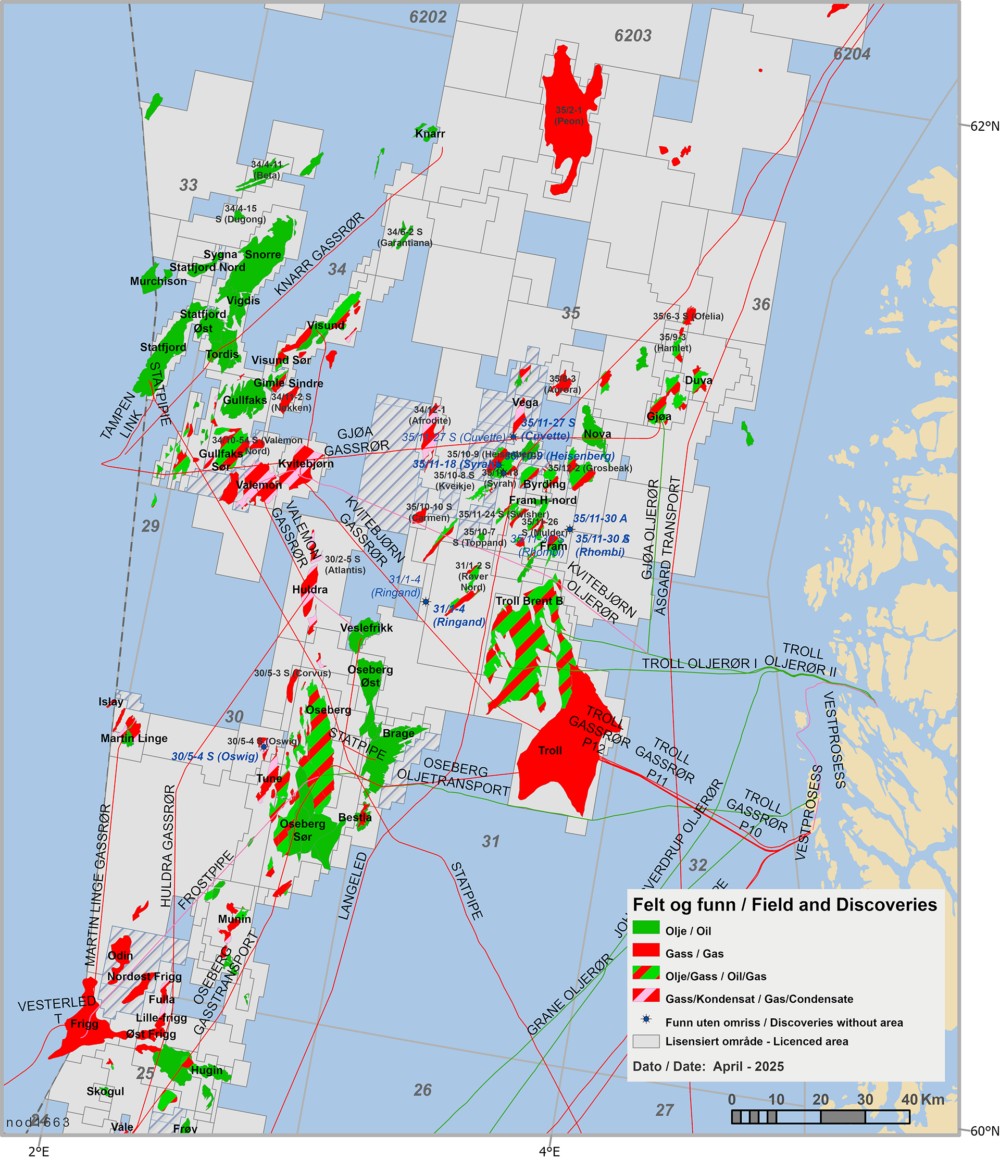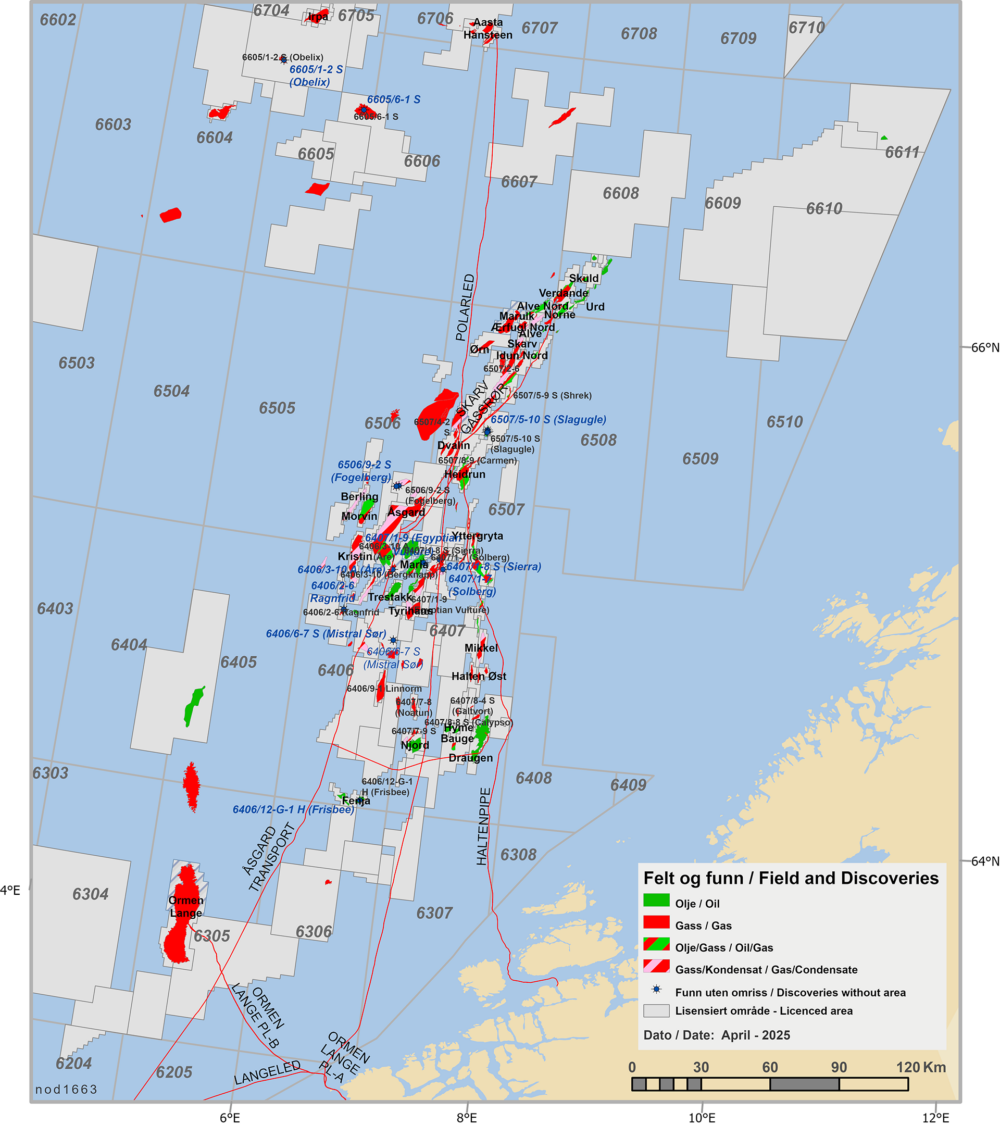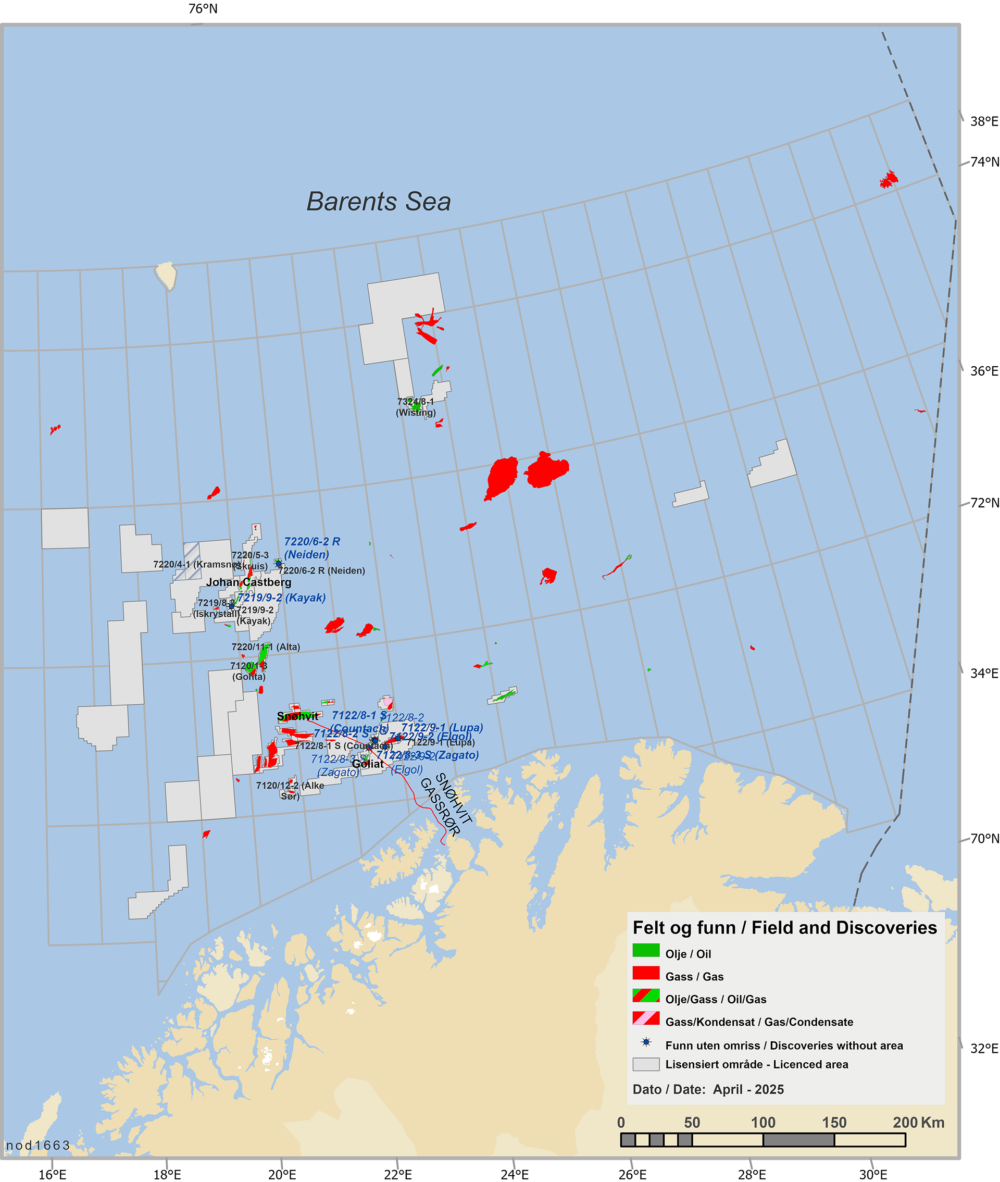The Norwegian continental shelf covers an area of more than two million square kilometres (2 039 951 km2). This is almost six times the land area of mainland Norway, Svalbard and Jan Mayen.
The North Sea is still the powerhouse of the Norwegian petroleum industry, with 69 fields in production. In addition, there are 23 fields in production in the Norwegian Sea and two (Snøhvit and Goliat) in the Barents Sea.
Each of these areas is divided into quadrants corresponding to a degree of longitude and latitude. Each quadrant is further divided into 12 blocks. The quadrants in the North Sea are numbered from 1 to 36, while those in the Norwegian Sea and Barents Sea are named by the degree of longitude and latitude.
The Norwegian part av the North Sea covers an area of 142 000 km2. This is the most thoroughly explored part of the Norwegian shelf, and the area that has most discovered and produced oil and gas. There are now 69 fields in production in the North Sea.
Southern North Sea
Norway’s oil era started in earnest in the southern North Sea, with the discovery of Ekofisk in 1969. Ekofisk has been producing for more than 50 years, and according to current plans, production will continue for another 30 years. There are still considerable remaining resources in this area. The Ekofisk complex is a hub for petroleum activities in this area, and many fields are tied in to the Ekofisk infrastructure for onward transport.
Oil and gas from fields in this area are transported by ship or pipeline to onshore facilities in the UK and continental Europe.
Central North Sea
The first oil discovery on the Norwegian continental shelf was made in this area. The Balder field was proven as early as 1967, but not developed until 30 years later.
The first development in the area was the Frigg gas field, which came on stream in 1977 and produced for nearly 30 years, until it was shut down in 2004. Several fields in this area have recently started production or are under development. The Johan Sverdrup field is the fifth largest oil discovery ever made on the Norwegian shelf. The field is developed in several stages. Production from the second stage started end of 2022.
The Sleipner facilities are also an important hub in the gas transport system on the Norwegian shelf. Gas is transported by pipeline to onshore facilities. The different pipeline systems are linked to onshore facilities in Norway, the UK and continental Europe. Most of the oil from this part of the North Sea is transported by tanker.
Northern North Sea
Large fields such as Statfjord, Gullfaks and Snorre in the Tampen area, as well as the Oseberg and Troll fields, make the northern part of the North Sea one of the most important areas on the Norwegian continental shelf. Oil and gas has been produced from this area for more than 30 years, and production is expected to continue for at least another 30 years. For several of the fields that have been producing for a long time in this part of the North Sea, such as Snorre, the lifetime has been extended by the installation of new facilities and measures for increased recovery. Statfjord also has shown to produce better and longer than expected.
The Troll field is very important for the gas supply from the Norwegian shelf, and the field will play a leading role in Norwegian gas export for decades to come. In addition, Troll is a significant oil field.
Oil from this part of the Norwegian shelf is mostly transported by tanker; the rest, like the gas, is delivered by pipelines to onshore facilities in Norway or abroad.
The Norwegian Sea is twice as large as the North Sea, covering an area of 289 000 km2. This petroleum province has large gas reserves, and is less mature and less thoroughly explored than the North Sea. The only exception is the Halten Bank, where production of oil and gas started over 20 years ago.
Draugen was the first field to start producing in this area, in 1993. There are now 23 fields in production in the Norwegian Sea.
With the Aasta Hansteen field and the Polarled pipeline, a new gas region has been opened on the Norwegian continental shelf. The Norwegian gas transport system now extends to the north of the Arctic Circle.
Gas from the Norwegian Sea is largely transported by pipeline to various onshore facilities in Norway and further to the UK and continental Europe. Oil is transported by tanker (buoy-loaded on the fields).
The Norwegian part of the Barents Sea covers an area of 313 000 km2, and is the largest sea area on the Norwegian continental shelf. The Barents Sea is also the sea area in Norway with the largest potential for oil and gas. Only the area south of 74° 30’ N is open for petroleum activities.
The only fields in production in the Barents Sea are Snøhvit and Goliat, which came on stream in 2007 and 2016, respectively. The Johan Castberg field is under development. Gas from Snøhvit is transported by pipeline to the Melkøya onshore facility, where it is processed and cooled down to produce liquefied natural gas (LNG), which is delivered to the markets on special LNG vessels. Produced oil and gas from Goliat are transported onto a Floating Production Storage & Offloading (FPSO) unit, where the oil is processed, stabilised and stored for further export in tankers. The gas from Goliat is reinjected into the reservoir.
Most of the Barents Sea is considered to be a frontier petroleum province, even though there have been exploration activities here for more than 30 years, and the first discovery was made in the early 1980s. It is estimated that approximately half of the undiscovered resources on the Norwegian continental shelf are in the Barents Sea.
